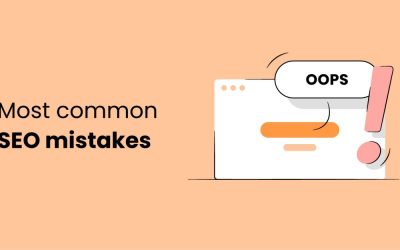SEO Techniques to Optimise a Website
Search engine optimization involves making a variety of small changes to your website in order to improve its performance in organic search results.
While some of these changes are insignificant, when taken together they can have a big impact on your site and its user experience.
There are several basic SEO techniques that almost everyone should know about.
Creating a seed list of keywords
The first step in creating a seed list of keywords for SEO optimization is to research what your competitors are using to rank for similar keywords. Use an SEO keyword tool to find related keyword variations and plug-in five to ten keywords at a time. This process will help you get started in the right direction, and you can use it to refine your list of keywords.
Another way to create seed lists is to use niche-specific sites to find products and services related to a particular keyword. Depending on how deep you dive into your niche, this can be simple or difficult. Using the navigation menu or top-level category pages will help you discover related keywords.
Once you have identified relevant long-tail keywords, you should create a mind map and save it in a Word document or text file. A seed list is a critical component of any content strategy. It provides ideas for blog post topics and helps you research new long tail keywords. Ultimately, a comprehensive seed list will improve your topical authority.
Seed lists can also be useful in identifying new subtopics for keywords. For example, if a seed keyword is “swing”, then it will generate results related to swing dancing. Therefore, if you sell playground equipment, you may want to exclude keywords that contain the word “dance.”
The next step in keyword research is to expand the seed list of keywords. You can use tools like Google Webmaster Tools to pull a list of relevant keywords. Ideally, your seed list will only include keywords that have larger impressions. Also, make sure you include keywords that you already rank for.
Using the Google Search Console
Using the Google Search Console is a great way to analyse and improve your website’s performance. It will show you how responsive your site is, what elements are causing problems, and what you can do to improve them. This will ensure that you are giving your visitors a great mobile experience and that you are getting the best search results possible.
The information that you can gather from Google Search Console will help you improve your website’s rankings. You’ll be able to see how your content appears when people search for a specific keyword, as well as how many people clicked through to your site. The search engine crawler will scan all of your web pages for factors, links, and keywords, which will help you improve your Search Engine Optimisation.
Structured data, also known as schema, will help Google understand the structure of your content and increase your chance of being included in rich snippets. However, creating schema on your website can be time-consuming. To make the process easier, use a tool like Google Tag Manager, which will automatically generate the right code for you. You can also use the Google Search Console to keep track of the status of your structured data.
The Google Search Console also displays data on the number of pages that are indexed. It also shows the ranking of individual pages. The GSC can also tell you whether there are any pages that are being blocked by CSS. If you have a large site, you should compare the XML sitemap with the indexed pages. This will help you identify crawling and indexing issues, as well as issues with content duplication.
Interlinking internal links is another way to boost your SEO. By interlinking pages, you can create topic clusters that will rank higher in search results. In addition, your content will get more authority and trust if it contains links from other websites. Google Search Console can also help you analyze your internal linking strategy.
When trying to rank for keywords in Google, you must make sure you use good heading tags. A well-written heading tag leads the user down the page and breaks up the content. Google rewards pages with good headings. Using these tags correctly will increase the amount of traffic to your website.
The keywords you use in your headlines should be related to the content on your website. It helps search engines determine how relevant your content is. However, it is important to remember that heading tags should not be used for styling purposes. This is because they appear as big text in browsers and may turn off readers. It is also important to ensure that the HTML heading tags match the rest of the page, especially the layout.
Adding heading tags to your website is very simple. The best way to add heading tags is to highlight the text in your web page and click the tag drop-down box. This option is available in most content management systems. Alternatively, you can also use a keyboard shortcut or select the tag with your mouse.
Heading tags can help you rank well in search engines. H1 tags are used to highlight the most important part of your content, while H2 and H3 tags serve as subheadings. H4 and H5 tags are used to provide further structure within subsections. Heading tags are useful not just for users, but also for search engines because they provide context for the content.
Headings should be relevant and informative, and should be based on the content of the page. A poorly-optimised heading will fail to engage users.
Adding schema markup
Schema markup is a way to tell search engines what your content is and helps users get the best information about a website. It is sometimes referred to as a virtual business card. It also helps your website show up better on SERPs, making it more visible to people searching for certain information.
To start adding schema markup, you can use a tool called Google Structured Data Markup Helper. It allows you to create a schema for a website or email. You’ll need the URL of the page and HTML code. This tool will highlight the data on the page and add it to the markup.
This technique can help your website show up better in search results and increase organic traffic. You can also add knowledge panels to your pages, which help your content stand out and attract more organic visitors. When visitors find relevant information on a page, they’re more likely to click on it and make a purchase.
You can create schema markup manually or through an automated tool. It is important to validate the code before you add it to your site. The most common pages that benefit from schema markup are product pages and contact information pages. You can also use WebFX tools to help integrate schema markup into your website.
Adding schema markup to your website’s HTML is a great way to enhance SEO. It helps search engines understand your website’s structure and provide more accurate information when people are searching for information online. The structured data helps your website show up higher on SERPs than your competitors.
Changing URLs
Changing URLs to SEO optimise a site can have a number of unintended consequences. It can damage your site’s upward momentum, as well as break internal links, which signal to Google which pages are important. Additionally, it can cause your website’s rankings to drop significantly. Changing the URL structure of your website can also hurt your backlinks, which Google needs to assess the trustworthiness of your website.
Before you start modifying your URLs, be sure to thoroughly research them. This is particularly important for your SEO rankings, which may be affected by the change until Google understands the new structure. In addition, you should make a list of all your URLs, both old and new, and maintain it. This way, you can check if the migration went smoothly and alert yourself to any missing pages.
When changing your URLs, it’s important to use a 301 redirect to send your visitors to the new version of your website. This will ensure that your site is no longer accessible to people searching for the old URL. You should also update your XML sitemap to reflect the new URL.
Another SEO tip is to use hyphens to separate words in the URL. Underscores are not easily parsed by search engines, and can lead to confusion. It’s best to use hyphens whenever possible. In addition, try to avoid adding too many folders in your URL. This will make your URL look neater and easier for search engines to read.
Another major advantage to changing URLs is that it makes your website easier to navigate. The shortened URLs are also easier to share. Having less than 32 characters is good for SEO. If you’re planning to use subdomains, try to avoid using unnecessary folders. You should also avoid adding any date to your URL. Remember, Google uses other mechanisms to identify the date of a post.









